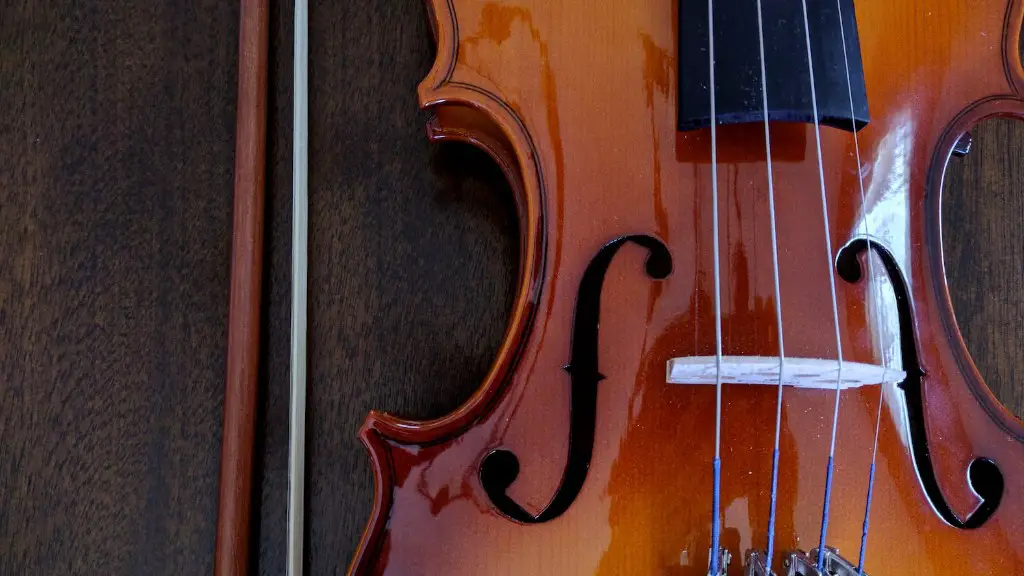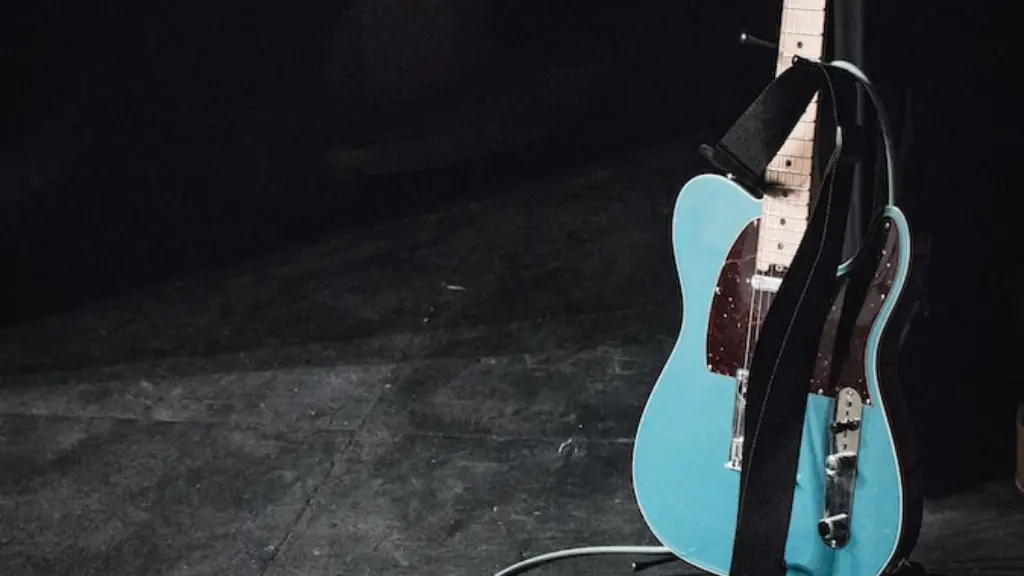Intonating an electric guitar is an important step in ensuring that it plays in tune with itself and with other instruments. Intonation is the process of adjusting the length of a guitar’s strings so that all of the notes are at their correct pitch. Here are some tips to help you intonate your guitar correctly.
Start by tuning the guitar to concert pitch. This can be done using an electronic tuner or by comparing it with another instrument. Once the strings are tuned, you should check the intonation of each string. To do this, play a harmonic at the 12th fret and then play the same note fretted on that string.
If these two notes sound different, then you will need to adjust the bridge saddle accordingly. Make sure that both notes match when compared with each other. If you adjust one saddle, check all six strings as this can affect their intonation.
Once all of the strings have been adjusted, your electric guitar should be properly intonated and ready to play!
Tools Needed for Intonating Electric Guitar
Intonating an electric guitar requires a few basic tools. A guitar tuner is a must-have tool for intonating an electric guitar as it helps to ensure that the strings are in tune. Additionally, an electronic or manual strobe tuner can be used to measure string tension, and an adjustable wrench and screwdriver can be used to adjust the bridge saddles, truss rod and nut slots. Finally, a set of allen wrenches is essential for adjusting the machine heads and other parts of the instrument.
To get started, it’s important to make sure that the neck is straight by adjusting the truss rod with an adjustable wrench or allen key. Once this is done, the bridge saddles should be adjusted to match the notes of each string as indicated by your tuner. It’s also important to check and adjust the nut slots if needed with a small screwdriver or allen key as this will affect intonation as well. Finally, the machine heads should be checked and tightened if necessary, which will help keep strings in tune over time. With these tools, intonating your electric guitar should be easy and straightforward!
Understanding the Different Types of Electric Guitar Bridges
The bridge of a guitar is an important part of its sound and playability. There are several different types of bridges that can be used on an electric guitar, each with its own unique properties. Fixed bridges are typically found on lower-end guitars and provide a secure, consistent connection between the string and body. Tremolo bridges, also known as vibrato bridges, are more common on higher-end guitars and allow for more control over the pitch by adjusting the tension on the strings.
Floating bridges are similar to tremolo bridges in that they allow for pitch manipulation, but they have greater range when it comes to depth and width of sound. Some guitars feature locking nut pieces that keep strings from slipping out of tune when tremolo or vibrato effects are used. Piezo pickups, which use a transducer to amplify vibrations from the strings, are often used in conjunction with floating bridges or tremolo bridges to create unique sounds. Intonation is an important factor in getting the most out of any electric guitar bridge, so it’s important to take care in setting up and maintaining any type of bridge on your instrument.
Setting the Saddle Height
Intonating an electric guitar involves setting the saddle height for each string so that it matches the note of the 12th fret. This ensures that notes up and down the neck are perfectly in tune. To start, loosen the strings and turn the machine heads to raise or lower the string’s pitch until it matches the note of that string’s 12th fret. Once you have achieved this for all strings, tighten them back up and adjust the saddle height with a Phillips-head screwdriver. The goal is to have each string’s saddle as close as possible to being parallel with the pickups. Use a tuner to check your work and make sure each string is in tune before you play.
When setting up a new electric guitar, intonation is something that should be done right away as it can greatly affect your playing experience. With practice, setting your saddle height will become easier and you can be sure that your guitar will stay in tune no matter what notes you play! Be sure to check your intonation regularly, as even small changes in temperature or humidity can affect it over time.
Adjusting the String Length of an Electric Guitar
Intonating an electric guitar involves making adjustments to the string length, so the strings play in tune with each other up and down the fretboard. To begin, locate the bridge saddles on the guitar’s body. Then, use a screwdriver to adjust each saddle’s height. To intonate each string, start by loosening it and then plucking it while listening to its pitch. Next, turn the saddle screw until you hear a change in pitch. Once you’ve adjusted all of the strings, play a chord up and down the neck to check for any buzzes or out-of-tune notes. If you find any issues, adjust the bridge again until it is properly intonated. Finally, retune your strings and enjoy playing in tune!
Intonating an Electric Guitar
Intonation is a critical element in getting the best sound from your electric guitar. Correctly intonated strings will help you achieve the best possible tone, clarity and sustain for your instrument. Intonation is the adjustment of the strings so that chords and individual notes sound in tune up and down the fretboard. Intonation can be set by adjusting the bridge saddles on an electric guitar, which moves the strings closer to or further away from the fretboard. To properly intonate your guitar, you must first tune it to standard pitch. Once it is in tune, use an electronic tuner to check each string’s intonation at different frets. If any of the notes are out of tune, adjust the bridge saddle until they are correct.
When all of the strings are properly intonated at different frets, test them out by playing a few chords to ensure that they sound in tune with each other. If any notes still don’t sound right, make further adjustments until they do. Intonation is a delicate process and should be done carefully to avoid damaging your instrument or causing it to go out of tune. With practice and patience, you will be able to fine-tune and test your electric guitar’s intonation easily and accurately!
Poor Intonation in Electric Guitar Playing
Poor intonation in electric guitar playing is a common issue for guitarists of all levels. Intonation refers to the accuracy of the pitch of each note played on the guitar. Poor intonation can be caused by several factors, including improper setup of the strings and frets, incorrect tuning, or poor technique.
To achieve good intonation on your electric guitar, start by making sure your strings and frets are properly set up and aligned. Check that your strings are in tune with an electronic tuner or by ear. If you’re still having trouble with intonation, practice proper technique and make sure you’re pressing down evenly along the fretboard.
The height of your strings can also affect intonation. If they’re too low, they won’t vibrate properly when plucked which can lead to poor intonation. Adjust the height of your strings so they are not too low or too high, but just right for optimal sound quality.
Finally, practice slowly and carefully to improve your accuracy and consistency when playing notes. This will help you play with better intonation over time. With practice and patience you can learn to play with perfect pitch and make beautiful music on your electric guitar!
Final Words
Intonating an electric guitar is an important step to ensure its sound quality and playability. It can seem intimidating, but with the right tools, the right knowledge, and plenty of patience, you can intonate your guitar properly. The most important thing to remember is to take your time when making adjustments and double-check every step before moving on. Lastly, don’t be afraid to ask for help from a professional if needed.
Although intonating your electric guitar may seem challenging at first, with practice it will become second nature. So don’t be intimidated—go ahead and give it a try! You’ll be glad you did.





